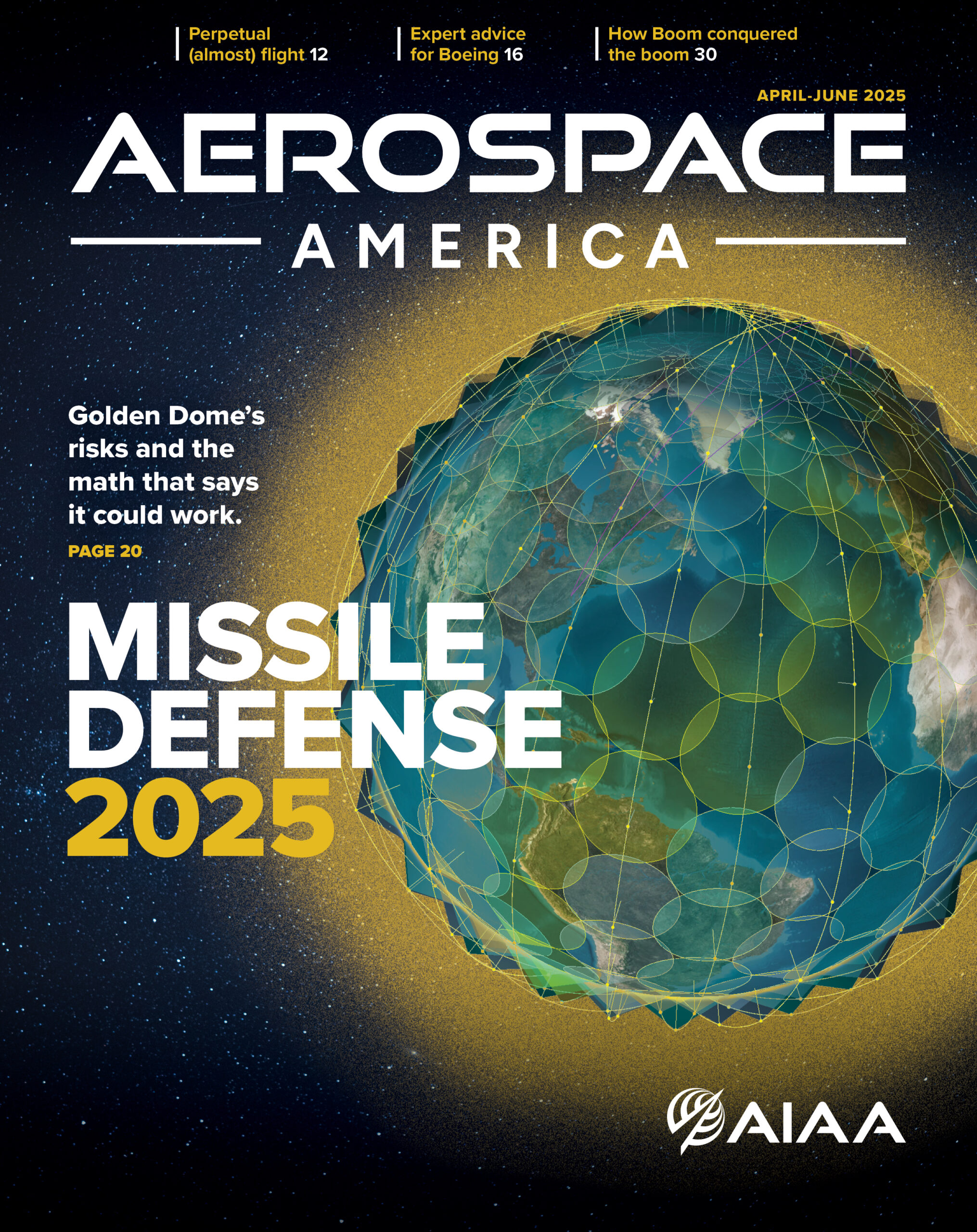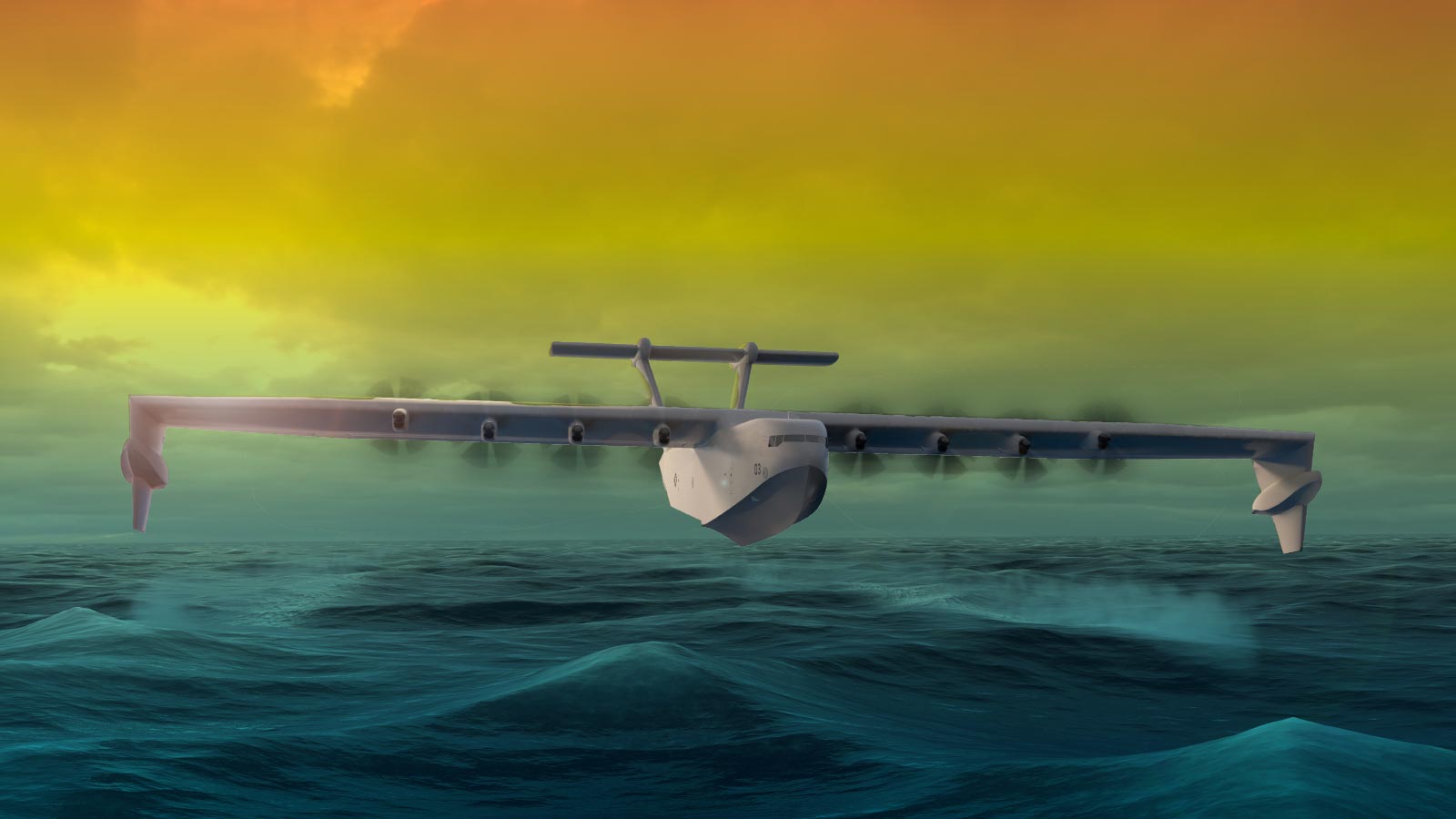Stay Up to Date
Submit your email address to receive the latest industry and Aerospace America news.
An artist’s concept of DARPA’s Liberty Lifter demonstrator. Credit: Aurora Flight Sciences
WASHINGTON, D.C. — A program that aimed to transform logistics for the Defense Department was abruptly canceled earlier this year because it failed to “meet its metrics” as it progressed through research and development, the head of the Pentagon’s research and development branch said Tuesday.
“Some 70% of programs don’t meet their metrics,” Stephen Winchell, director of DARPA, said at the U.S. Chamber of Commerce’s Global Aerospace Summit. “The idea there was to be able to move cargo quickly and securely across a vast theater with a lot of logistical challenges, and honestly, the manufacturing and a lot of the other parts of the program that needed to come together — we ended up finding out that it was harder than we thought.”
DARPA in 2023 selected two companies, General Atomics and Boeing’s Aurora Flight Sciences, to generate concepts, and last year selected Aurora to construct the “Liberty Lifter” demonstrator by 2027. This seaplane was to be capable of transporting 7,700 kilograms (170,000 pounds) of gear, be comparable to an Air Force C-17 Globemaster in payload capacity, and — ambitiously — operate in weather conditions as extreme as Sea State 5, with waves up to 4 meters (13 feet). The aircraft, as envisioned, would fly at altitudes up to 10,000 feet above the water, “at speeds far exceeding existing sealift platforms,” according to a DARPA fact sheet.
It’s not clear if DARPA can pivot to any comparable technology. The concept of a seaplane or glider for fast, cheap military logistics over water has enjoyed a vogue in recent years, however. A spin on the concept, an electric seaglider made by the Rhode Island-based company Regent Craft, remains in development and has received $15 million in R&D funding from the Marine Corps with a target operational date of 2026.
Winchell, who stepped into his role in May, said he encouraged DARPA developers to kill their own programs when it becomes clear the concept can’t progress further.
“Failure is really not the right word. It’s iteration,” he said.
Ongoing programs that Winchell remains excited about include the No Manning Required Ship, or NOMARS, program, which in August christened its first ship, the Defiant.
Winchell said space continues to be a significant focus for DARPA as well. Among the current research is the LunA-10 capability study, which is focusing on assessing what it would take to sustain commerce on the moon by the middle of the next decade.
“We’ve had some really interesting work investing in studies around what a future system or economy might look like,” he said. “So, partnering with private industry, with other parts of government and academia, to really figure out, ‘OK, how many calories and watts and joules do we need to actually build an economy that is self-sustaining, and how do we mobilize capital and technology to potentially make that vision a reality by 2035?’”
About Hope Hodge Seck
Hope is an award-winning freelance reporter and editor based in Washington, D.C., who has covered U.S. national defense since 2009. A former managing editor of Military.com, her work has appeared in The Washington Post, Popular Mechanics and Politico Magazine, among other publications.
Related Posts
Stay Up to Date
Submit your email address to receive the latest industry and Aerospace America news.




